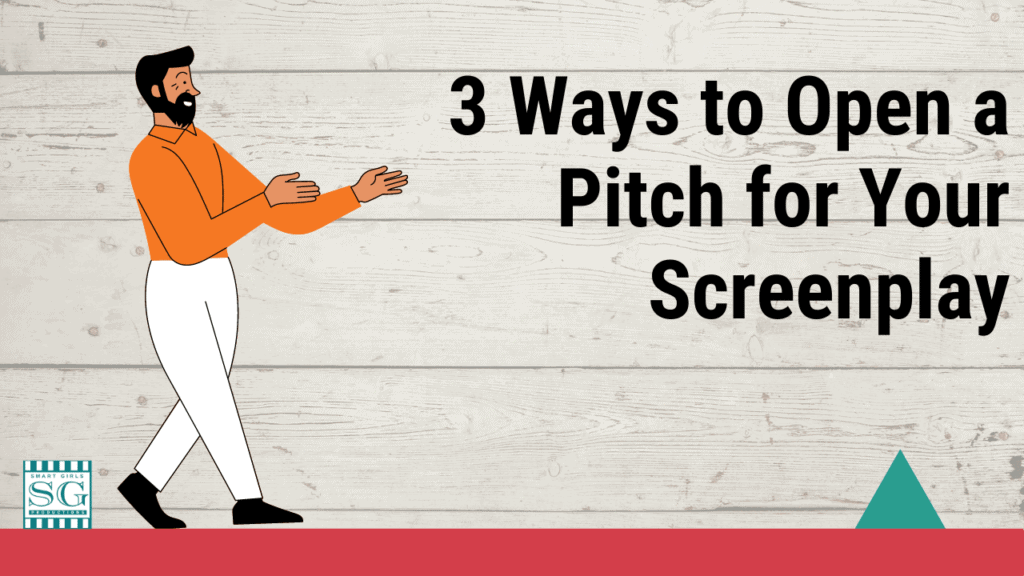Three Screenplay Pitch Openings That Hook Audiences Instantly
When it comes to pitching a screenplay, how you start can make or break the entire pitch. The first few moments are your chance to grab the listener’s attention, set the tone, and show what makes your story unique. Here are three opening styles that will make your pitch memorable and compelling from the get-go.
1. The Question Hook
Starting with a powerful, thought-provoking question immediately engages your audience. A well-crafted question not only grabs attention but also leads them to think about your story from a fresh perspective. It works best for high-stakes dramas or thrillers that deal with universal themes or moral dilemmas.
Example 1:
“What would you do if you discovered your best friend was hiding a secret that could save—or destroy—the world?“
In this opening, you’re inviting your listener to enter the world of the story personally, making the stakes feel relevant and urgent. They’re now invested in finding out what happens next.
Example 2:
“What would you do if someone who was extremely attractive offered you one million dollars for one night with your new spouse… and you both had talked about how you desperately needed money?”
This, of course, is the premise of the film Indecent Proposal with Demi Moore and Robert Redford. The question itself engages the mind and draws you in. Whether you’re married or not, you can’t help asking yourself what you would do! And probably… “Who’s offering?!” Also, what if it was to get the money for an operation for your sick mother… or a sick child?
It gets the imagination engaged immediately as you wonder what you would do.
2. The High-Concept Snapshot
A high-concept snapshot is a concise, vivid description of your story’s core. This is particularly effective for stories with strong visual or genre-driven elements, like action, fantasy, or sci-fi. You’re giving the listener a quick flash of what the story feels like, pulling them right into the experience.
Example 1:
“Imagine a world where everyone forgets who you are the moment you leave the room, and only one person in the world still remembers you.”
With this type of opening, you’re providing just enough detail to spark curiosity while leaving your listener wanting more. The goal here is to evoke a sense of wonder or intrigue that gets them to ask, “How does that work?” or “What happens next?”
3. The Emotional Character Tease
This approach draws your listener in through a strong, relatable character moment. It’s especially effective for character-driven dramas or stories that explore deep relationships or personal growth. Instead of starting with plot details, you’re giving them a glimpse into the protagonist’s inner world and emotional journey.
Example 1:
“At thirty-five, Sarah had everything: the career, the dream apartment, the perfect partner. But on the morning of her wedding, she realizes she’s built a life based on someone else’s expectations.”
In this opening, you’re showing the emotional stakes right away. Your listener can immediately identify with the character’s journey and becomes invested in seeing where it goes.
Example 2:
“It’s 1942. WWII is well underway. Hundreds of Europeans are fleeing from the Germans trying to get to America. But to do so, they must go to Casablanca to get their exit visas. The hottest spot in all of Casablanca is Rick’s Cafe, operated by Rick Blaine, an American expatriate. Rick’s Cafe is a happening night club where people often cross paths with old friends who are coming and going…”
This is the setup for the film Casablanca, of course. With this pitch openind, we’re drawn into the setting, the vibe, the mood. We feel the lively activity of the club with the backdrop of tension of that time in World history. We want to know what’s next.
Making It Yours
While these three approaches can be powerful on their own, consider blending them to create a truly unique pitch. You might start with a high-concept snapshot and follow up with a question that highlights the story’s stakes, or lead with a question and then introduce a character moment that makes the story feel personal.
The key is to know your story well enough to identify which aspect—plot, concept, or character—is the most captivating. Choose an opening that aligns with that strength and lets your passion for the story come through.
Final Tips for a Winning Pitch Opening:
Keep it concise. Avoid getting bogged down in too much detail at the start. You want to pique curiosity, not overwhelm.
Tailor it to your audience. A producer who specializes in thrillers might appreciate a high-concept question, while someone interested in indie dramas may respond better to a character-driven teaser.
Practice with feedback. Rehearse your pitch openings with friends or peers and pay attention to their reactions. A strong pitch opening often sparks immediate interest or leads to follow-up questions.
Remember, the beginning of your pitch sets the stage for everything that follows. Start strong, and you’re well on your way to delivering a pitch that’s as unforgettable as your screenplay.
If you’re ready to take your screenplay beyond the pitch and get it in front of the right producers, check out my script marketing services where I can help you make that crucial first impression by finding the ideal producers in your genre and even craft a big juicy query, letter for your script.
Remember, one killer pitch can change everything—go make it happen!”


